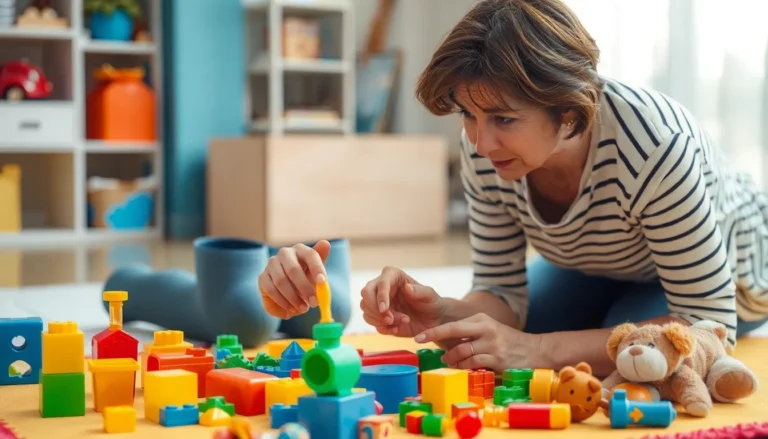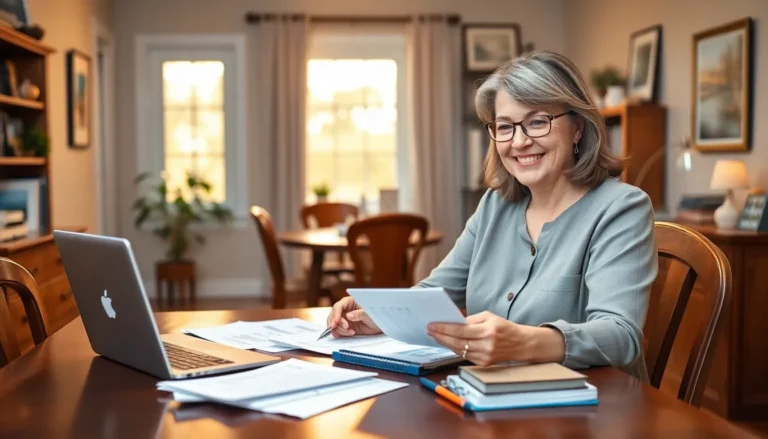Table of Contents
ToggleNavigating the rental market can feel like a game of hide and seek, but instead of kids, you’re dodging hidden damages and sneaky landlord secrets. A rental home inspection is your trusty flashlight in this dimly lit maze, revealing everything from leaky faucets to that suspicious stain on the carpet that might be more than just a mystery.
Before signing on the dotted line, it’s essential to give your potential new abode a thorough check-up. Think of it as a first date—you wouldn’t want to end up with a charming facade that hides a multitude of issues. With a rental home inspection, you’ll ensure your future digs don’t come with a side of regret. So grab your checklist and let’s dive into why this inspection is not just a good idea but a must for savvy renters.
What Is Rental Home Inspection?
Rental home inspection involves a thorough assessment of a property before a tenant moves in. This evaluation helps identify any existing issues, such as plumbing problems or electrical faults. Inspectors look for damage to walls, floors, and ceilings, ensuring renters know the condition of the property.
Property managers or landlords often initiate these inspections, but prospective tenants can also conduct them. Observing appliances, fixtures, and overall cleanliness plays a crucial role in the process. Potential renters should document any findings with photographs and notes to provide clear evidence of pre-existing conditions.
Many landlords appreciate the proactive approach of tenants conducting inspections, as it fosters transparency. Additionally, inspections can clarify property standards, outlining maintenance responsibilities for both parties. A well-executed inspection supports effective communication between owners and renters, promoting a positive rental experience.
In most cases, conducting a rental home inspection before signing a lease fosters informed decision-making. Identifying issues early can mitigate future conflicts, ensuring the property meets expected living conditions. A successful inspection contributes to long-term satisfaction for tenants and landlords alike.
Importance of Rental Home Inspection

Conducting a rental home inspection serves as a vital step for both tenants and landlords. This process protects renters while ensuring landlords maintain properties effectively.
Protecting Tenants
Rental home inspections help tenants identify issues like leaks or damages before signing a lease. Recognizing these problems early allows renters to negotiate repairs or avoid potentially costly situations. Thorough inspections also clarify the condition of appliances and fixtures, providing a trustworthy assessment of the property. Documenting findings with photographs and written notes creates a clear record of pre-existing conditions, serving as proof if disputes arise later. Engaging in this proactive approach shields tenants from unexpected costs and supports informed decisions about the rental.
Safeguarding Landlords
Landlords benefit from rental home inspections by establishing transparency with prospective tenants. Addressing issues beforehand enhances property standards and demonstrates a commitment to maintenance. Effective inspections can build trust, leading to smoother communication and fewer disputes over responsibilities. By documenting the property’s condition, landlords guard against claims for damages that occurred before a tenant moved in. Maintaining a well-documented inspection process fosters positive relationships, ensuring a higher level of tenant satisfaction and retention.
Key Components of Rental Home Inspection
A comprehensive rental home inspection focuses on several key components, ensuring that potential issues surface before signing a lease.
Structural Elements
Evaluating structural elements includes checking walls, ceilings, floors, and the foundation. Inspectors should look for signs of cracks, water damage, or any sagging. Understanding the condition of these elements helps pieces align for durability and safety. A sound structure supports both safety and longevity. Renters deserve to know the condition of the home before moving in.
Electrical Systems
Electrical systems require careful examination during an inspection. Inspectors need to verify the condition of wiring, outlets, and circuit breakers. Outdated or faulty electrical systems can lead to severe hazards. It’s crucial to ensure that all outlets work properly and are grounded. Proper functionality enhances safety and avoids potential costly repairs down the line.
Plumbing Systems
Plumbing systems encompass more than just visible pipes. Inspectors must check for leaks, water pressure issues, and the condition of fixtures. Understanding plumbing functionality ensures reliable access to water. Hidden leaks can lead to substantial damage and costs. A thorough inspection guarantees that all faucets and toilets operate smoothly before signing a lease.
Safety Features
Safety features play a vital role in any rental property. Inspectors should verify the presence and functionality of smoke detectors, carbon monoxide detectors, and fire extinguishers. Ensuring these elements work effectively protects tenants from potential hazards. Adequate safety features instill a sense of security in a rental home. Properties with functioning safety systems create an environment conducive to peace of mind.
How to Prepare for a Rental Home Inspection
Preparing for a rental home inspection involves understanding what to expect and ensuring the property meets your standards. Both tenants and landlords play crucial roles in this process.
For Tenants
Tenants should start by creating a checklist of areas to inspect. Focus on visible aspects such as walls, ceilings, and floors for any signs of damage or wear. Inspect appliances, ensuring they function properly and are clean. Communication remains key; ask the landlord questions about repairs or maintenance history. Document findings with photos for personal records. Having a clear and organized report helps in discussions if issues arise later. Lastly, prioritize safety features like smoke detectors and carbon monoxide alarms, confirming they work efficiently.
For Landlords
Landlords need to prepare by ensuring the property is clean and well-maintained prior to inspection. Check that all appliances are operational and inspect the plumbing for leaks. Preparing documentation of past repairs demonstrates transparency and builds trust. Additionally, verify that safety features are in compliance with local regulations. Being proactive about repairs shows commitment to tenant satisfaction. Finally, maintaining open communication fosters a positive relationship with prospective tenants, leading to higher retention rates.
Common Issues Found During Rental Home Inspections
Rental home inspections often reveal several common issues that potential tenants should prioritize. Addressing these problems early can lead to a more satisfactory leasing experience.
HVAC Problems
Heating, ventilation, and air conditioning problems frequently surface during inspections. Inspectors check for faulty thermostats, inadequate airflow, and unusual noises from systems. Proper functioning of HVAC units is essential for comfort throughout the year. Tenants should expect to find documentation of past maintenance to ensure reliability. Testing each component offers clarity regarding energy efficiency and potential concerns.
Mold and Water Damage
Mold and water damage remain prevalent issues in many rental properties. Inspectors primarily look for signs of leaks in roofs, walls, or plumbing systems. Visible mold growth can typically indicate prolonged moisture issues. Addressing water damage prevents health risks and costly repairs later on. Potential renters should pay close attention to musty odors or discoloration in walls and ceilings during inspections.
Pest Infestations
Pest infestations can significantly affect comfort in a rental home. Inspectors examine common entry points for rodents and insects, like cracks or openings in the foundation. They also evaluate the cleanliness of the property, as clutter can attract pests. Finding evidence of previous infestations raises red flags for future concerns. Renters should inquire about pest control measures and past treatment records to ensure their new home remains pest-free.
Conducting a rental home inspection is an essential step for both tenants and landlords. It empowers tenants to identify potential issues and negotiate repairs before committing to a lease. This proactive approach not only protects their interests but also fosters transparency and trust between parties.
Landlords benefit from inspections by establishing clear property standards and maintaining positive relationships with tenants. By documenting the condition of the property, they can avoid disputes over pre-existing damages and enhance tenant satisfaction.
Ultimately, a thorough inspection leads to informed decisions and long-term satisfaction for everyone involved. Taking the time to inspect a rental property is a smart investment in a hassle-free living experience.








